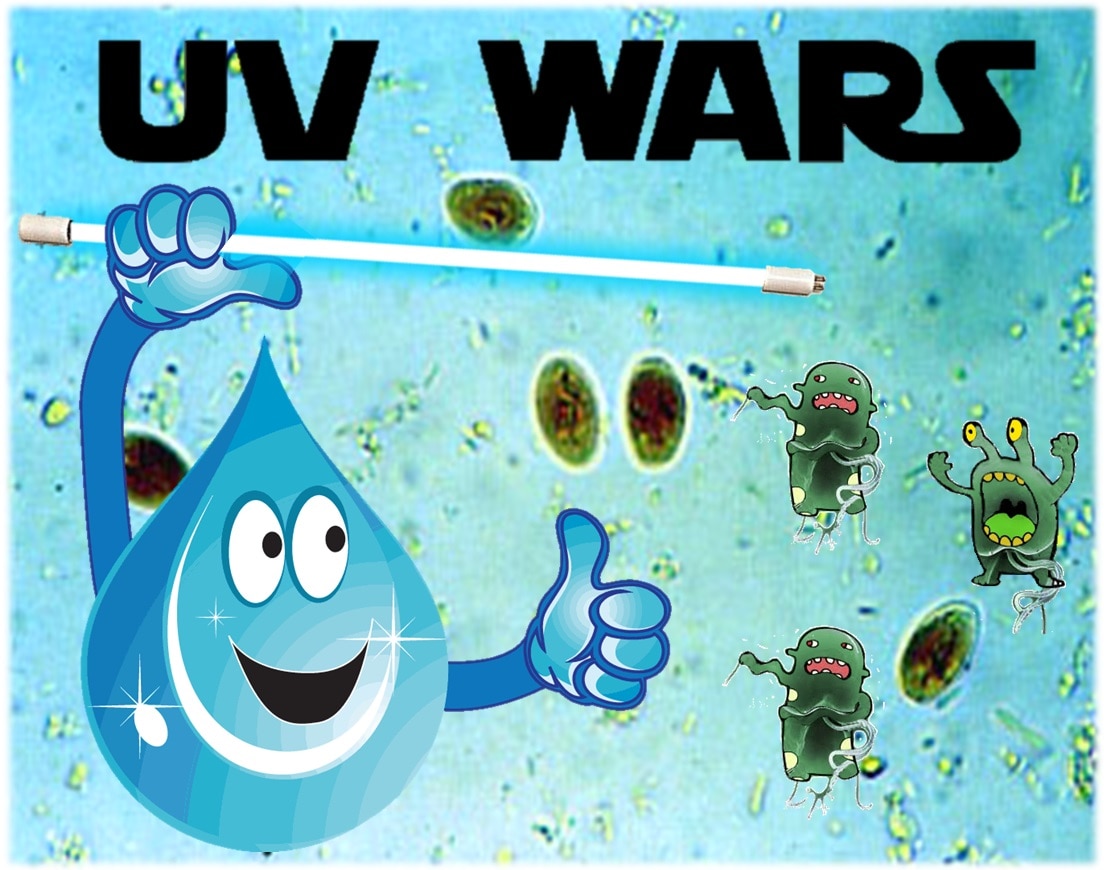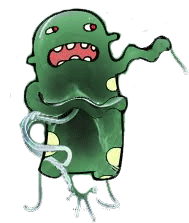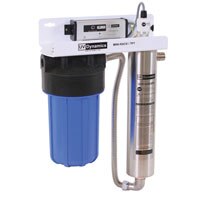- Hot Tubs & Spas
- General Information
- Chemical Dosage Charts for Hot Tubs
- Hot Tub FAQ
- How Hot Should my Hot Tub/Spa Be?
- Ultraviolet Disinfection (UV-C) for Hot Tubs
- Bulk Tubing and Hose
- Total Cost of Ownership (TCO) - Water Pump
- How-to Articles
- How to Get Rid of Algae in a Hot Tub
- How to Restart Your Hot Tub If You Haven’t Used it in a Year
- How to Test Your Hot Tub Water
- How to Properly Add Chemicals to Your Hot Tub
- PVC Installation Tips: How to Glue PVC Pipe
- Thread Sealants - Teflon Tape or Paste?
- Irrigation
- General Information
- Understanding Drought Levels and Water Restrictions
- Vancouver Island Water Restrictions
- Vancouver Island Current Water Restriction Stages
- Filter Screen Mesh to Micron Conversion Chart
- Comox Valley Smart Control Irrigation Rebate
- Victoria Water History
- Friction Loss and Water Velocity Chart
- Bulk Tubing and Hose
- 2018 Weathermatic Catalogue
- How-to Articles
- Do-It-Yourself Irrigation Design and Installation Guide
- Introduction to Micro-Irrigation
- Rain Barrel Soaker Hose
- Tips and Caring for Your Soaker hose
- PVC Installation Tips: How to Glue PVC Pipe
- Thread Sealants - Teflon Tape or Paste?
- Product Info
- Weathermatic
- Weathermatic SL800 Bundle with Rain/Freeze Sensor
- Weathermatic T3 Turbo Rotor
- Weathermatic N-100 Nitro Valve
- Mr. Soaker Hose Basics
- Mr. Soaker Hose - Frequently Asked Questions
- Drip In Soaker Dripline for Irrigation
- Lake & Lagoon Management
- General Information
- Benefits of Pond and Lake Aeration (video)
- Previous Next List Information Item Actions NAME Kasco Fountains VX Series Overview (video)
- Pump Maintenance
- Total Cost of Ownership (TCO) - Water Pump
- Bulk Tubing and Hose
- How-to Articles
- Kasco Floating Fountain Installations
- Preventing Ice Damage - Kasco Marine De-icing Guide
- PVC Installation Tips: How to Glue PVC Pipe
- Thread Sealants - Teflon Tape or Paste?
- Product Info
- KASCO Marine
- Kasco LED Fountain Lights
- Kasco Marine 3400VFX Aerating Fountain Assembly (video)
- Kasco Aerating Fountains (video)
- Microbe-Lift PBL Professional Blend Bacteria
- Kasco De-Icers
- Kasco Robust-Aire Diffuser Overview (video)
- NEW Water Pump from Shinmaywa
- Landscape Lighting
- General Information
- Benefits of Landscape Lighting (pt.1) (video)
- Premium Outdoor Lighting vs Cheaper Brands
- Light Recycling Program Information
- How-to Articles
- Construct a Low Voltage Transformer Stand (video)
- Security Lighting at it's Best - Cast LED Perimeter Light (video)
- Outdoor Lighting Wiring Techniques - Crimp and Heat Shrink (video)
- Product Info
- DH Lights: Low Voltage Outdoor Lighting, Quality & Value
- Brilliance Flex Strip Lighting
- CAST Lighting FAQ
- Solid Bronze Bullet Light from Cast Lighting - (video)
- The CAST Niche Light (video)
- Tree Light from Cast Lighting (video)
- Outdoor Cooking
- General Information
- Southern Barbecue Comes to Van Isle Water
- How-to Articles
- Memphis Grills Outdoor Cooking Recipes
- Product Info
- Memphis Grills - A Revolution in Outdoor Cooking
- Memphis Grill FAQ
- Infusion Roaster - Turkey Cannon
- Create a Cutting Edge Fire Feature with Warming Trends' Cross-Fire Burner System
- Ponds & Watergardens
- General Information
- Everything Needed To Build a Koi Pond
- Everything Needed To Build a Pond Free Water Feature
- Benefits of having a Pond
- Do I Really Need a Pond Filter?
- Aeration - The Benefits of Bubbles
- Benefits of Pond and Lake Aeration (video)
- Waterfall Flow Chart
- It Seemed Like a Good Idea at the Time
- PondGard (EPDM) Decorative Applications Guide
- Pond Winterizing Tips and Tricks
- The Oasis Pump Vault - Under the Hood
- 2018 Atlantic Water Garden Catalogue
- Total Cost of Ownership (TCO) - Water Pump
- Bulk Tubing and Hose
- Pump Maintenance
- Friction Loss and Water Velocity Chart
- Light Recycling Program Information
- 2018 Warming Trends Mini Catalogue
- 2018-Atlantic-Catalog
- How-to Articles
- Pond Building Basics - Where Do I Start?
- Atlantic Water Garden - Pond Guide
- Atlantic Water Garden - Pond-Free Guide
- Atlantic Water Garden - Pond Pump Guide
- Atlantic Water Garden - Water Feature Guide
- Everything Needed To Build a Water Garden
- Everything Needed To Build a Pond Free Water Feature
- Everything Needed To Build a Koi Pond
- Oase Pondovac - Trouble Shooting
- OASE Bitron C Ultraviolet Water Clarifier (video)
- Filtrific The Pondless Problem Solver!
- Eco-Blox Assembly Instructions (video)
- How-to Assemble Atlantic's Eco-Blox (video)
- Eco-Rise Installation Diagram
- Installing an Atlantic Water Garden Eco-Rise System
- Atlantic Water Garden - Tidal Wave TT Pump Maintenance (video)
- Atlantic Water Garden - Tidal Wave TW Pump Maintenance (video)
- Atlantic Colorfalls: How to Winterize
- Atlantic Pond Protector Installation (video)
- PondGard (EPDM )Technical Guide and Manual
- How to Deal with Pond Algae?
- Pond Health - Spring/Summer Cleaner (video)
- Easy Pond Winterizing System (video)
- Pond Sludge Removal Without Vacuuming (video)
- Pond Health - Eliminate Ammonia in Your Water
- Pond Clarification (video)
- Benefits of Barley in your Pond (video)
- What is KH, and Total Alkalinity (video)
- How To Test Your Pond Water Chemistry
- Hudson Valve Troubleshooting & FAQ
- UV Bulb Replacement - Pond Water Treatment
- PVC Installation Tips: How to Glue PVC Pipe
- Thread Sealants - Teflon Tape or Paste?
- Product Info
- Oase Filtral UVC 700 - All in One Pump & Filter System
- Pentair All in One Pump & Filter System
- Oase Aquamax Eco Classic (video)
- Oase Aquamax Eco Premium (video)
- OASE filter pump video - Aquamax Eco (video)
- OASE Filtoclear 3000 (video)
- OASE Filtoclear 16000 (video)
- OASE Filtoclear (video)
- OASE Filters for Small Ponds
- OASE BioSmart 5.1 (5000) video
- OASE Biotec Screenmatic Overview (video)
- Oase Pondovac 4 - Action Video
- Filtrific Filter Tank and Expansion Tank demo (video)
- TidalWave3 TT Series Pumps from Atlantic Water Gardens
- The Atlantic Variable Speed Controller
- Atlantic Water Gardens - Colour Changing Vases (video)
- The Atlantic Colour Changing Colorfalls
- Inside the Shinmaywa Pump
- NEW Water Pump from Shinmaywa
- String Algae or Blanket Weed Problems?
- Microbe-Lift PBL Professional Blend Bacteria
- Fish Food Enriched with Beneficial Bacteria (video)
- Blue Diamond Aeration Pumps and Diffusers
- Kasco Pond Fountain
- Kasco Marine 3400VFX Aerating Fountain Assembly (video)
- Rockin Foam - pond and waterfall foam: FAQ
- Rainwater Harvesting
- General Information
- What is Rainwater Harvesting
- Rainwater Harvesting FAQ
- Water Conservation Tips
- Is Drinking Rainwater Safe?
- Basic Rainwater Harvesting System and its Components
- Rainwater Rewards Program & Stormwater Utility
- District Offering Big Cash Rebates for Rainwater Harvesters
- Winterize Your Rainwater Harvesting System
- Uniseal - Innovative Pipe Penetration Seals
- Bulk Tubing and Hose
- Pump Maintenance
- CANARM and the City of Victoria Rainwater Harvesting Initiatives
- ARCSA Training a HUGE Hit!
- How-to Articles
- Clean Rain Ultra Installation (video)
- How To Calculate Rainwater Catchment and Volume
- PVC Installation Tips: How to Glue PVC Pipe
- Thread Sealants - Teflon Tape or Paste?
- Product Info
- Leaf Eater Advanced
- Clean Rain Ultra (video)
- Wisy Vortex Rainwater Harvesting Filter (video)
- Premier Plastics Vertical Water Tanks, Septic Tanks and Pump Out Chambers
- Jobe Floats and Valves
- NEW Water Pump from Shinmaywa
- Rain Barrel Soaker Hose
- Sump & Wastewater
- General Information
- Living on a Septic System
- Where Does The Wastewater Go?
- 6 Signs your Septic Systems Needs to Be Pumped
- 9 Things You Should NEVER Flush Down The Toilet
- Sizing a Septic System
- Pump Maintenance
- Bulk Tubing and Hose
- Friction Loss and Water Velocity Chart
- Total Cost of Ownership (TCO) - Water Pump
- How-to Articles
- It's Sump Pump Time!
- Prevent Frozen Septic Systems in Winter
- PVC Installation Tips: How to Glue PVC Pipe
- Thread Sealants - Teflon Tape or Paste?
- Product Info
- SJE EZ Series In-Site CL Data Logging Control Panel
- SJE-Rhombus EZ Series In-Site CL Control Panel (video)
- Why Homeowners Need a Battery-Powered Backup Sump Pump System
- Flood Buzz Pro - Leak Alarm (video)
- Septic Systems, Beneficial Bacteria and Pro Pump FAQ
- NEW Water Pump from Shinmaywa
- Inside the Shinmaywa Pump
- Leader BVP Heavy Duty Solids Handling Pump
- Little Giant Grinder Pump (video)
- Red Lion Gas Powered Pumps
- Premier Plastics Vertical Water Tanks, Septic Tanks and Pump Out Chambers
- Swimming Pools
- General Information
- Swimming Pool FAQ
- Common Misconceptions about Pool & Spa Care
- Chemical Dosage Charts for Swimming Pools
- Chlorine vs. Bromine
- Pool and Spa Water Conservation Tips
- Bulk Tubing and Hose
- Friction Loss of Common Pool System Components
- Friction Loss and Water Velocity Chart
- Chemical Resistance Charts
- Total Cost of Ownership (TCO) - Water Pump
- How-to Articles
- Testing Your Swimming Pool Water
- What is pH level or balance - Swimming Pool Maintenance
- What is Total Alkalinity - Swimming Pool Maintenance
- Water Hardness / Calcium Hardness - Swimming Pools
- What to do when cloudy swimming pool water strikes
- Salt Dosage Chart for Swimming Pools
- Spring & Summer Pool Opening Tips
- Closing Your Swimming Pool for the Winter (Winterizing)
- How To Estimate the Total Volume of a Pool or Pond
- PVC Installation Tips: How to Glue PVC Pipe
- Thread Sealants - Teflon Tape or Paste?
- Product Info
- The NEW but Original - Jacuzzi!
- Dolphin Supreme M400
- The NEW but Original - Jacuzzi!
- Aqua Finesse - Simple Pool Water Care
- Hayward H-Series Natural Gas Heater with Electronic Ignition
- Heatsavr - The Liquid Pool Cover (video)
- Our Best Pond or Pool Net - Pond Shark Pro
- Water Features
- General Information
- Bulk Tubing and Hose
- Pump Maintenance
- Total Cost of Ownership (TCO) - Water Pump
- Friction Loss and Water Velocity Chart
- Warming Trends Mini Catalogue
- How-to Articles
- Everything Needed To Build a Water Garden
- Eco-Rise Installation Diagram
- Thread Sealants - Teflon Tape or Paste?
- Water Treatment
- General Information
- Boil Water Advisory Information
- POE (Point-of-Entry) vs POU (Point-of-Use) Water Filtration Systems
- How Does Ultraviolet Water Treatment Work?
- UV (ultraviolet) Water Disinfection FAQ
- UV Dosage Chart
- Tap Water Filtration
- Under the Sink Filtration Installation Diagram
- Well Water Testing
- Should I disinfect or chlorinate my well?
- Hard Water vs Soft Water
- Why does my hot water smell like rotten eggs?
- What are Tannins in my Groundwater
- Water Conditioning Basics - Water Analysis
- Top 5 Contaminants That You Can Remove From Drinking Water
- What You Need to Know About Lead In Your Water
- Water Conditioning Basics - Sizing Parameters
- Water Conditioning Basics - The Hydrologic Cycle
- Water Conditioning Basics - Guidelines for Solving Water Problems
- Cysts in Water Supply: Treating Water Born Disease Causing Protozoa
- Pump Maintenance
- Victoria Water History
- Bulk Tubing and Hose
- Chemical Resistance Charts
- Light Recycling Program Information
- How-to Articles
- ECOMIX (Video)
- Reverse Osmosis Installation Diagram
- How Water Softening Works
- How To Clean, Replace and Reset My Trojan UV MAX System
- How to Reset Your UV Dynamics After Replacing the Lamp
- PVC Installation Tips: How to Glue PVC Pipe
- Thread Sealants - Teflon Tape or Paste?
- Product Info
- SWIFT Refrigerator Filters - New Product Line
- UV Dynamics - Ultraviolet Disinfection Systems
- Stenner - Proportional Chemical Feed System
- Flood Buzz Pro - Leak Alarm (video)
- Wells & Groundwater
- General Information
- What is Ground Water (Video)
- Groundwater FAQ
- Well Water Testing
- Constant Pressure Systems for Low or Fluctuating Water Pressure
- Top 5 Cause of Low Water Pressure
- What's In Your Well?
- Victoria Water History
- Water Conservation Tips
- Understanding Drought Levels and Water Restrictions
- Pump Maintenance
- Uniseal - Innovative Pipe Penetration Seals
- Bulk Tubing and Hose
- Friction Loss and Water Velocity Chart
- Filter Screen Mesh to Micron Conversion Chart
- Well Decommissioning
- Well Protection & Groundwater Stewardship
- Groundwater Protection Act - British Columbia
- Licensing Groundwater Users - British Columbia
- Water Sustainability Act - British Columbia
- Why A Submersible Motor Costs What It Does
- Total Cost of Ownership (TCO) - Water Pump
- Choose the Right Pump by Calculating Total Dynamic Head
- Water Systems Glossary
- Unit Conversion Chart
- How-to Articles
- Managing Your Well During a Drought or Dry Spell
- Servicing a Water Pressure Tank
- Winterizing Your Water Well System
- #1 Cause of Pump Failure
- What are Tannins in my Groundwater
- Franklin Electric Jet Pump Motors (video)
- PVC Installation Tips: How to Glue PVC Pipe
- Thread Sealants - Teflon Tape or Paste?
- Product Info
- Franklin Electric Inline 400 Pressure Boosting System by Franklin Electric
- Franklin Electric 3200 Series Groundwater Pumps
- Red Lion Gas Powered Pumps
- Franklin Electric Vertical Multi-stage Pumps
- New Franklin Electric Connect App
- Franklin Electric AIM Manual
Friday, August 14, 2015
What is Lurking in Your Water?

One of the greatest concerns with groundwater supplies is the potential for disease caused by biological parasites such as cysts in water. Some of the most persistent and difficult to treat are the protozoan parasites such as Cryptosporidium or Giardia Lamblia (aka the cause of Beaver Fever). With awareness of this issue and proper treatment and testing practices you can ensure that your drinking water is safe for you and your family.
Although there is no absolute guarantee that a water supply is pathogen free, we can definitely do a lot to reduce the risk of infection by disease causing micro-organisms and ensure that our drinking water meets standards that are considered to be acceptable or at a safe level.
Municipal Water Sources

If your water source is from a municipal, or public water supply in Canada, you can be sure that it is treated and tested to produce micro-biologically safe water. Municipal water treatment systems generally do a good job of providing safe water without the need for additional treatment by the consumer. In some areas, such as Victoria BC, the municipality goes to great lengths to ensure that it's water is at the safest level possible by installing multi-barrier water treatment processes which include a state of the art Trojan UV system. Ultraviolet radiation has been shown to be a very effective solution for the de-activation of biological pathogens such as Cryptosporidium and Giardia (Wilczak et al., 1996).
Surface Water Contamination
If your water source comes from a surface water supply such as creeks, rivers, lakes or shallow wells that may be directly influenced by surface water then there is a very real possibility of contamination and the presence of cysts in water. It is important that you take measures to treat and test your water to protect yourself and your family from contamination by Cryptosporidium and Giardia Lamblia (AKA: Beaver Fever).
Cysts.... Real Pests in Our Drinking Water

Cryptosporidium and Giardia Lamblia are protozoans that may be present in any water that comes in contact with wildlife, and more specifically, feces (ie surface water). Both of these parasites produce a cyst, which is essentially a "suitcase" for the infectious material inside. Cysts in water are very resistant to harsh environmental conditions and most water disinfectant methods. When they are ingested they germinate, reproduce and cause illness. After feeding, the parasites produce new cysts which are passed in feces and in this way become re-introduced to the environment. It has been shown that ingestion of only a few cysts will cause illness in humans.
How to Treat Your Water if it is at Risk
Most of the methods used on a municipal scale been incorporated into smaller devices which are available to private citizens. These devices are usually designed to treat water at the point-of-entry(POE) which is where the water enters the home or at the point-of-use (POU) such as at a kitchen tap.
The most common drinking water disinfectants are chlorine, chloramine, ozone and chlorine dioxide, with chlorine being the most widely used. Chlorine is a strong oxidant and is capable of inactivating bacteria and viruses. Chlorine based disinfectants, however, are not very effective for the control of cysts in water.
UV Light Disinfection

Many studies have been carried out which show that Ultraviolet light disinfection appears to be a highly effective method for inactivating many types of pathogens, including pathogenic protozoa such as Cryptosporidium and Giarda. (Wilczak et al., 1996). Click here for more information about how UV disinfection works
In Conclusion
The bottom line in all of this is your health and safety. If you rely on surface water as your primary source of drinking water you will be best served by a multi-barrier approach which includes mechanical filtration, chlorine-based disinfection and ultraviolet sterilization. It is also highly recommended that you look for products that have been certified by an accredited certification body to meet the standards set out by NSF International (NSF) or the American National Standards Institute (ANSI).